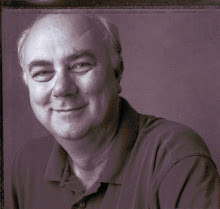D-B Football Stars Endorse 7UP!
In 1946.
(Click to enlarge)
A new California law says it’s okay for college
athletes to sell their autographs and their images and even endorse products.
Other states are expected to follow.
What will they think of next, letting high school
athletes endorse products?
That’s already happened in Kingsport and it didn’t
take an act of the state legislature to make it happen.
In 1946 the Salley twins and Buck Anderson, stars of
the D-B football team appeared in an ad for 7-Up. They aren’t expressly
endorsing the soft drink – there is no advertising copy in the ad - but the
idea is pretty clear: after a hard practice (all three are shirtless and two
are gripping footballs) nothing refreshes like a 7-Up!
73 years later we don’t know if the three received
anything in compensation other than a free soft drink while they posed.
We also don’t know if Bobby Dodd received anything
for endorsing Hall Mark shirts in a 1926 newspaper ad for Cut-Rate Dry Goods.
In the July 13, 1926 edition of the Kingsport Times,
in bold letters across the top of an ad for Cut-Rate Dry Goods it reads “BOBBY
DODD says our shirts are the best to be had.”
He is quoted in the ad: “I’ve been wearing size 15
and I can wear size 14½ in Hall Mark shirts.”
The ad continued:
“You school boys ask Bobby.
“If these shirts fade, your money back.
“Ask Bobby Dodd.”
Did Dodd, the Salleys or Anderson break TSSAA rules
when they allowed their names to be used in an ad for a discount store?
The answer is simple: No.
Nowhere in the early TSSAA eligibility rules did it
say an athlete was prohibited from using his or her athletic fame to endorse a
product.
It probably hadn’t even occurred to anyone at TSSAA
that a high school athlete might appear in a newspaper ad for discount shirts
or soft drinks.
The 1946 trio appeared only in the 7-Up ad, which
appeared in a magazine published by D-B students called “The Cherokee.”
The new California law doesn’t address the issue of
high school athletes selling autographs or endorsing soft drinks.
But that may be next. And then there’s this
question: what about middle schoolers?




0 Comments:
Post a Comment
<< Home